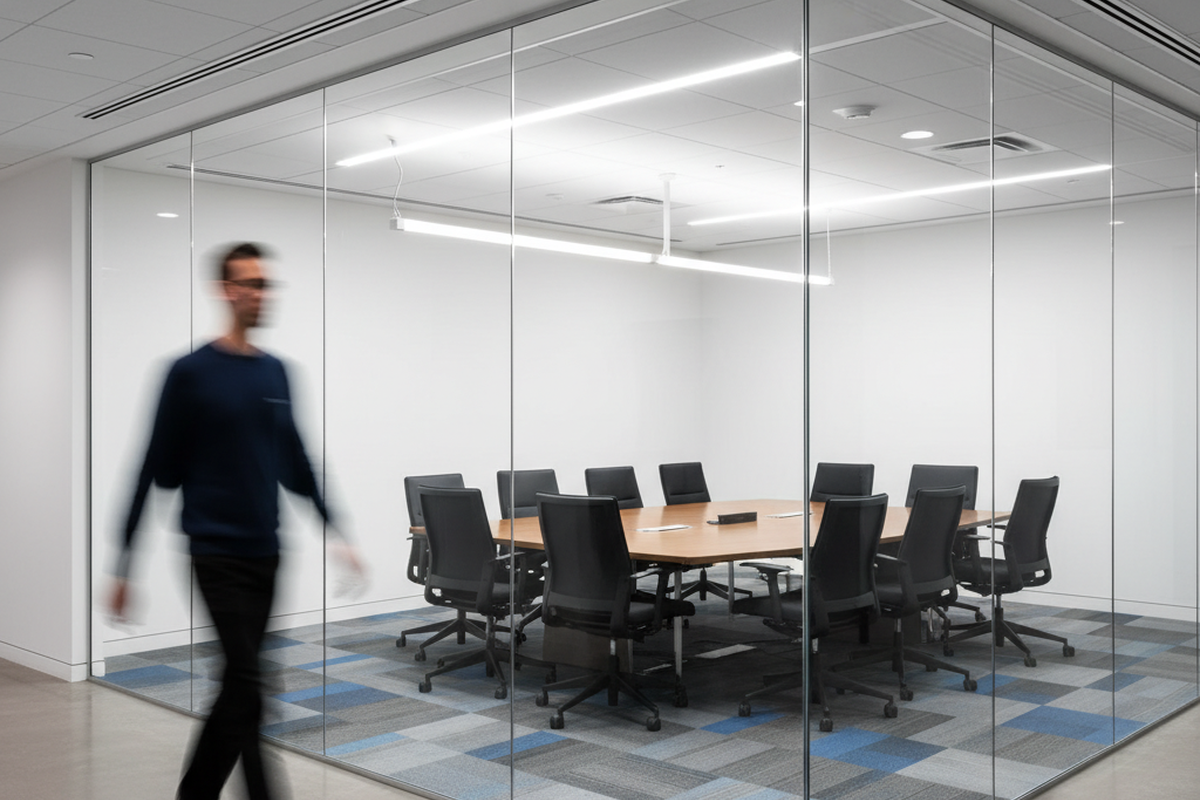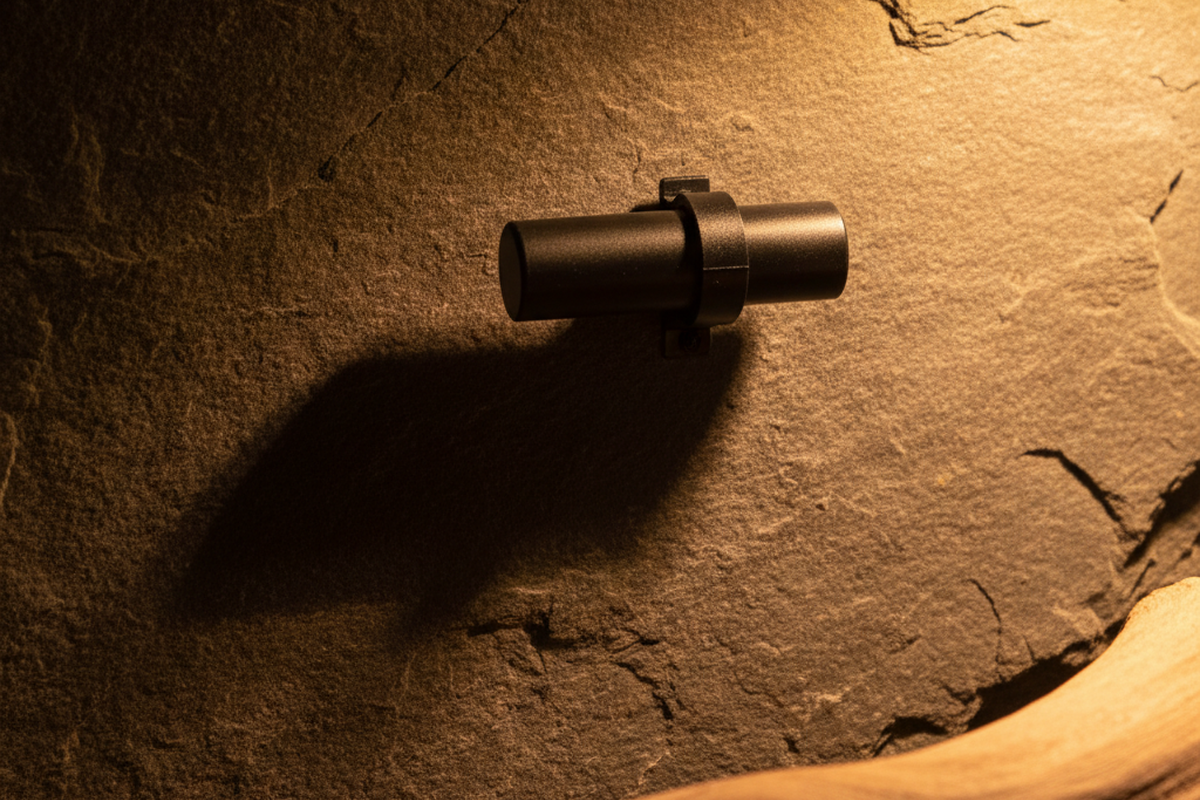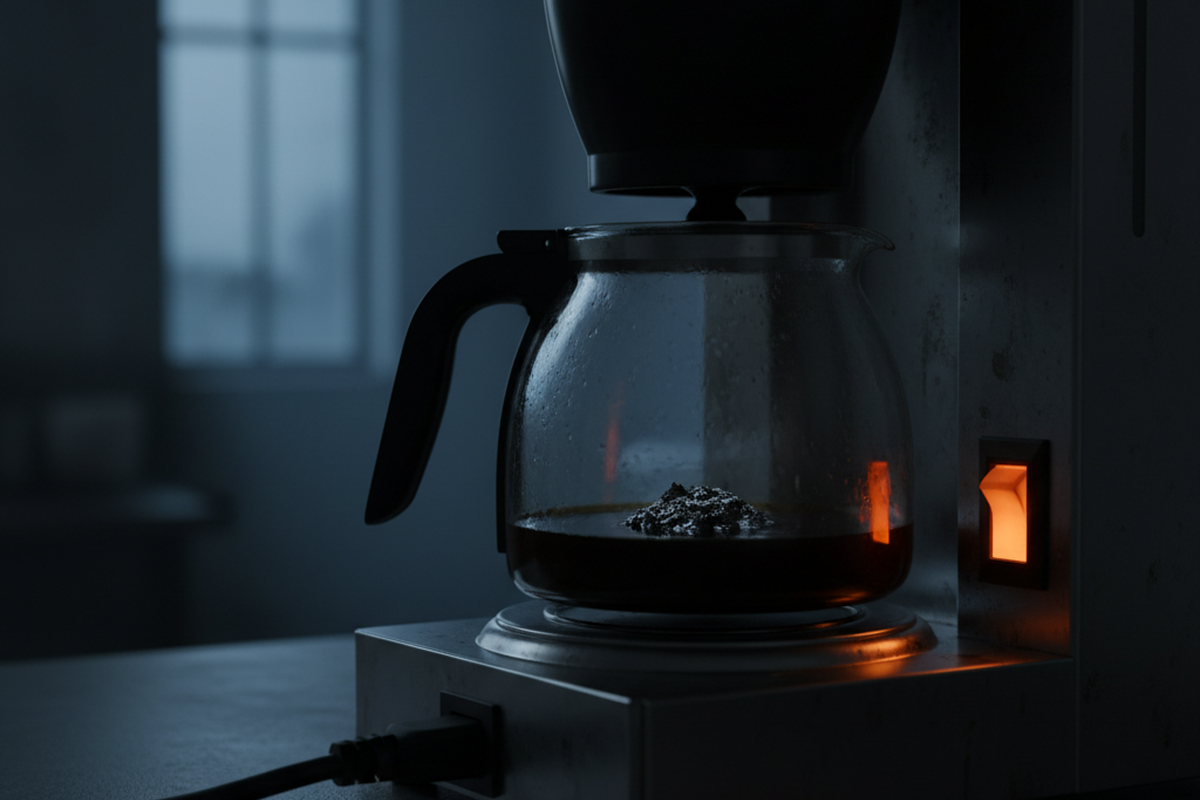A perimeter office with floor-to-ceiling glass floods with morning sun, yet the overhead fixtures blaze at full output. A retail storefront basks in noon light while its ceiling cans burn needlessly. In both cases, the occupancy sensor worked exactly as designed, detecting a person and switching on the circuit. The design itself is the problem: it ignores the most abundant and free light source available.
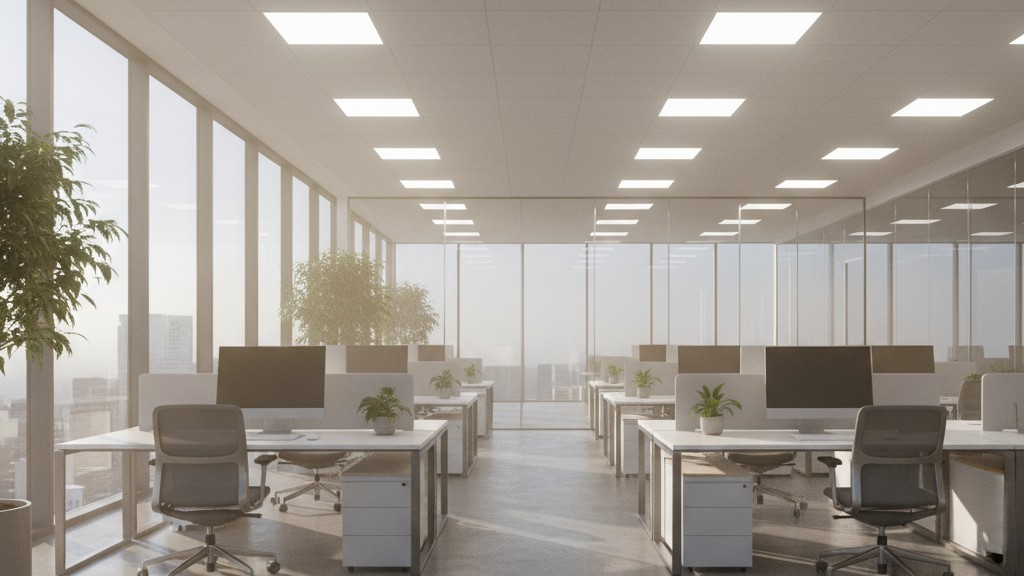
Standard occupancy sensors solve one inefficiency well: they turn off lights in empty rooms. Their binary logic is based on motion detection. Presence equals on; absence equals off. This assumes darkness is the baseline. In spaces with substantial daylight from windows, skylights, or atriums, that assumption fails. The sensor cannot distinguish between a room that needs artificial light and one already brilliantly illuminated. The circuit closes, power flows, and watts burn for no reason.
The solution is an occupancy sensor that integrates a second input: ambient light. These devices combine motion detection with a photocell, introducing a threshold test before switching the load. This dual-gate logic—checking for both presence and darkness—allows the system to respond intelligently to natural light without a building automation system or complex programming. The technology is mature and widely available. The real challenge is configuration. Factory defaults rarely match real-world conditions, but field tuning transforms these devices from merely functional to genuinely efficient.
The Paradox of Sunlit Waste
Offices with expansive glazing, storefronts designed to blur the line between inside and out, and conference rooms with southern exposure all represent significant investments in electric lighting. Fixtures are specified, circuits are run, and controls are installed to meet code. The occupancy sensor satisfies the energy code’s automatic shutoff requirement, so on paper, the system is compliant and efficient.
In practice, these sensors typically use passive infrared or ultrasonic technology to detect a person. When motion registers, a relay closes and energizes the lights. The decision tree is brutally simple: if the sensor sees movement, it assumes a need for light. If the space is already bright from daylight, the sensor has no way to know. Its only inputs are motion and time. Light level is invisible to its logic.
This leads to a predictable pattern of waste. Morning sun pours through east-facing glass, providing more than enough illumination. Someone walks in, the sensor responds, and the overhead lights switch on. They often remain on for hours, pointlessly supplementing a space already bathed in natural light. This inefficiency is structural, not accidental.
How Occupancy Sensors Measure Daylight
Integrating daylight awareness into an occupancy sensor requires a photocell, a light-sensitive component that translates brightness into an electrical signal. This signal becomes a second decision point alongside motion detection. The sensor now evaluates two conditions before closing the relay: Is someone present, and is the space too dark without artificial light?
The Role of the Photocell
A photocell is a passive sensor, usually a cadmium sulfide cell or a silicon photodiode, whose electrical resistance changes with incident light. In bright conditions, resistance drops; in dim conditions, it climbs. The sensor’s internal circuitry monitors this change, which maps directly to ambient light intensity.
The photocell can be built into the occupancy sensor’s housing or installed as a separate component. Integrated photocells offer simplicity, with a single device handling motion, light measurement, and load switching. External photocells provide placement flexibility. Sometimes the best spot for detecting motion isn’t the best for measuring light. Separating the two functions prevents compromise. A ceiling-mounted motion sensor might be shaded by a beam, while a photocell placed near a window captures a far more accurate daylight reading.
Lux Thresholds as Control Logic
The photocell generates a signal, but the sensor’s configured lux threshold determines the action. Lux is a unit of illuminance, measuring the amount of light falling on a surface. A typical office desk requires 300 to 500 lux for comfortable work, while a sunlit display might receive several thousand.
The sensor’s logic is straightforward. If it detects motion and the measured light level is below the lux threshold, the lights turn on. If it detects motion but the light level is above the threshold, the lights stay off because daylight is already doing the job. When motion ceases, a countdown timer begins, and the lights switch off when it expires, regardless of the ambient light. The lux threshold acts as a gatekeeper, blocking unnecessary lighting during bright periods while still responding when clouds roll in or evening falls.
Looking For Motion-Activated Energy-Saving Solutions?
Contact us for complete PIR motion sensors, motion-activated energy-saving products, motion sensor switches, and Occupancy/Vacancy commercial solutions.
This dual-input logic mimics the decision a person would make manually, but with perfect consistency. The sensor applies the rule without distraction, forgetfulness, or wasteful habits.
Built-In Photo Thresholds vs. External Photocell Pairing
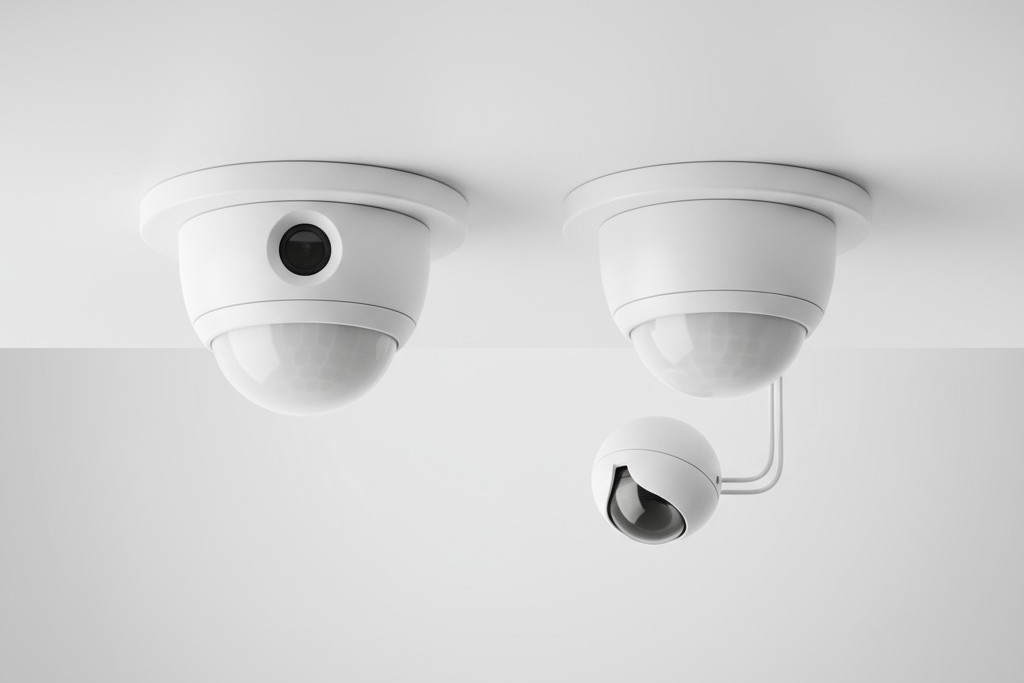
Choosing between an occupancy sensor with an integrated photocell and one paired with an external photocell affects installation, placement, and flexibility.
Integrated devices offer a clean, all-in-one solution. The motion detector, photocell, and relay are housed in a single unit that fits in a standard electrical box. Wiring is conventional, and configuration usually involves simple dials or DIP switches. This simplicity means lower installation labor and fewer points of failure. The trade-off is a fixed location. If the sensor needs to be in the center of the ceiling for motion coverage, its photocell may not get a representative sample of the room’s daylight, leading to poor tuning.
External photocell systems separate these functions. A standalone photocell, often a small dome or disc, can be mounted wherever it best measures ambient light—near a window, on a wall at task height, or in another key location. This architecture adds wiring complexity but solves the placement conflict. The motion detector can be positioned for ideal coverage while the photocell is positioned for ideal accuracy. For rooms with irregular daylight, such as deep spaces with windows at one end, this flexibility is critical for meaningful control.
The decision hinges on geometry. Rooms with uniform daylight from skylights work well with integrated devices. Perimeter spaces with directional windows and significant depth demand external photocells.
Determining the Right Lux Setpoint
The lux setpoint is the most consequential parameter. Set it too low, and daylight contributions are ignored, wiping out savings. Set it too high, and lights remain off when they are actually needed, compromising visibility. The goal is to find the threshold that maximizes savings without hindering the room’s function.
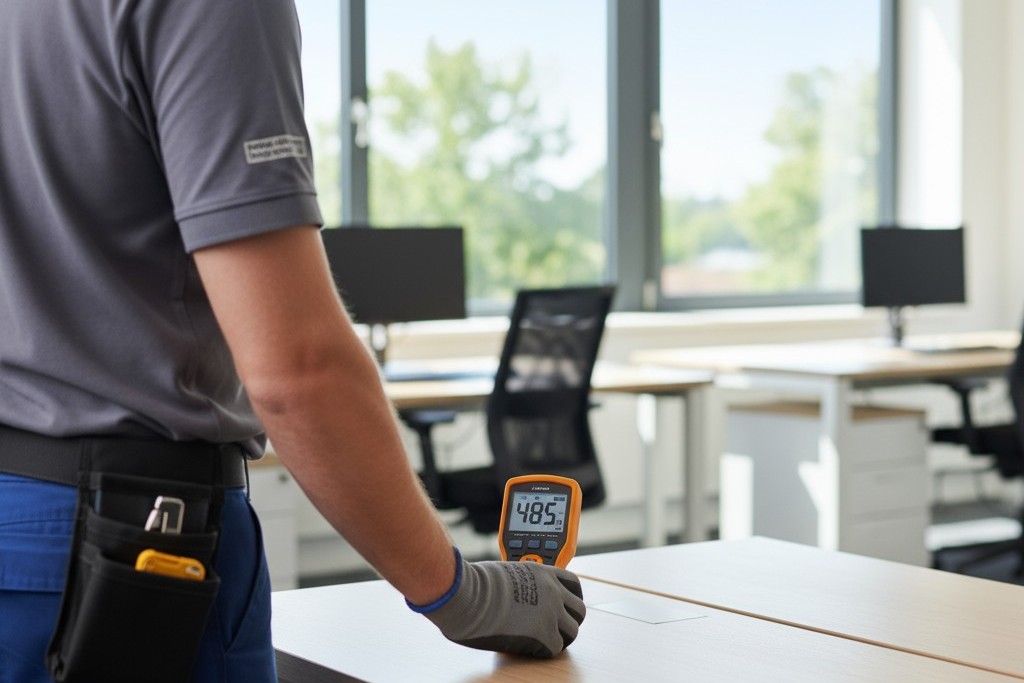
Published recommendations, often 300–500 lux for offices, are merely a starting point. Actual needs vary with the tasks performed, occupant age, surface colors, and even preference. A drafting studio requires different illumination than a conference room. Furthermore, a south-facing office with a high window-to-wall ratio may have its lights off most of the day with a 500-lux setpoint. That same setting in a north-facing room might rarely be met, effectively disabling the feature.
There are two ways to find the right setpoint. The first is to measure. Use a handheld lux meter on task surfaces during bright daylight. If the meter reads 800 lux and the space is comfortable, a 400-lux threshold ensures lights stay off during peak hours but activate when needed. The second approach is iterative. Start with a recommended value, observe the system for a few days, and adjust. If lights stay on despite ample daylight, raise the setpoint. If occupants complain of dimness, lower it. This method requires patience but no special tools.
For spaces with extreme daylight variability, like those with large east or west windows, a conservative setpoint that captures only the brightest hours may yield limited savings. A better approach is to find a balance that accounts for average daylight contribution throughout the day.
Time Delays in the Face of Clouds and Movement
The lux threshold governs when lights can turn on, while the time delay determines how long they stay on after motion ceases. In a daylit space, this setting must account for the variability of natural light.
Passing clouds are the primary disruptor. A cloud can temporarily drop daylight below the lux threshold. With a short time delay of one or two minutes, the sensor sees this dip and turns on the lights. Moments later, the cloud passes and daylight surges back, but the lights remain on because motion is still being detected. The system is now locked in an “on” state and won’t re-evaluate the light level until the motion timer expires—potentially hours later. A brief shadow has triggered an all-day energy burn.
This is the cloud-drift problem. Rapidly changing weather creates a sawtooth pattern of illuminance that a photocell tracks perfectly. If the sensor is too responsive, it will trigger the lights during temporary dips that a human would ignore.
Maybe You Are Interested In
Longer time delays, from five to fifteen minutes, counteract this. The system becomes less reactive to transient dips in light or brief gaps in occupancy. A longer delay means lights stay on slightly longer in an empty room, a minor inefficiency. But that cost is far smaller than the lamp stress, user annoyance, and wasted energy caused by a hair-trigger system. Shorter delays are for minimizing vacancy runtime; longer delays are for stability in dynamic environments. In daylit spaces, stability almost always wins.
Field Tuning Over Factory Defaults
No manufacturer can anticipate the conditions of a specific site, so factory defaults are a generalized best guess. Acceptable is not optimal. A default setting will underperform in a sunlit atrium and overperform in a windowless corridor. Leaving defaults in place guarantees mediocre results.
Field tuning is the practice of adjusting parameters to match the real-world environment. It requires observation, attention to detail, and a willingness to iterate. First, verify basic operation. Cover the photocell to confirm the lights turn on with motion, then uncover it to confirm they stay off. This ensures the dual-gate logic is working.
Next, set the lux threshold based on measurement or a recommendation for the space type. Observe for several days. If lights activate when the room feels bright enough, nudge the setpoint up. If the space feels too dim, nudge it down.
Finally, adjust the time delay. Watch for cycling—lights turning on and off repeatedly on a partly cloudy day. If this happens, lengthen the delay. The goal is to find the longest delay users will tolerate, as this maximizes stability.
The Tuning Sequence
- Install and verify basic motion detection and switching.
- Set a baseline lux threshold appropriate for the space.
- Observe behavior over 3-5 days across different light conditions.
- Adjust the lux setpoint up or down to match observed needs.
- Set the time delay to a moderate value, such as 8-12 minutes for an office.
- Monitor for cycling or excessive runtime and adjust the delay.
- Document the final settings for future reference.
Remember that daylight changes with the seasons. A setpoint tuned in December may be too conservative in June. A quick annual or biannual review—a slight upward adjustment for summer, downward for winter—will keep the system performing optimally.
Get Inspired by Rayzeek Motion Sensor Portfolios.
Doesn't find what you want? Don't worry. There are always alternate ways to solve your problems. Maybe one of our portfolios can help.
The Case for Simple, Hardwired Logic
Occupancy sensors with photocells operate on deterministic, hardwired logic. They read inputs, compare them to thresholds, and switch a relay. There is no network, no app, no cloud service, and no firmware updates. This simplicity is a strength.
Deterministic behavior is predictable and consistent. It builds trust. When a system behaves the same way every time, users stop thinking about it and it becomes effective infrastructure. Networked systems, by contrast, introduce connectivity as a dependency. A dropped Wi-Fi signal, a server outage, or a security patch can cause control to degrade or fail entirely, often leaving lights stuck on. A hardwired sensor’s only failure points are power and the device itself.
The maintenance burden is another key difference. Networked systems require ongoing IT management. A hardwired sensor, once tuned, requires no interaction. In spaces where the main challenge is daylight variability, the added complexity of networked controls offers little value and introduces unnecessary risk.
Setup Mistakes That Undermine Performance
Even the best hardware fails when configured badly. These common errors will sabotage any daylight-sensing system.
Photocell Placement Errors: A photocell in a shadowed corner will read low light levels even when the room is bright, triggering the lights needlessly. One placed too close to a window will read excessive brightness, keeping lights off when deeper parts of the room are dim. The photocell must be positioned to see the average light condition of the space.
Incorrect Thresholds: A setpoint that doesn’t reflect the room’s actual daylight profile either disables the feature or renders it useless. A threshold of 1000 lux in a space that never gets brighter than 500 lux from daylight means the photocell does nothing. Tuning is not optional.
Confusing Occupancy and Vacancy Modes: Occupancy mode is fully automatic (auto-on, auto-off). Vacancy mode is manual-on, auto-off. In a daylit space, vacancy mode is often better. It empowers the occupant; if they enter a bright room and don’t turn on the lights, they have decided daylight is sufficient. The sensor respects that choice, while still providing the energy-saving benefit of automatic shutoff.
Ignoring Seasonal Variation: A “set it and forget it” approach will fail. Daylight intensity and duration shift dramatically between winter and summer. A quick seasonal adjustment to the lux setpoint ensures the sensor’s logic stays aligned with the sun, maximizing savings year-round.





















